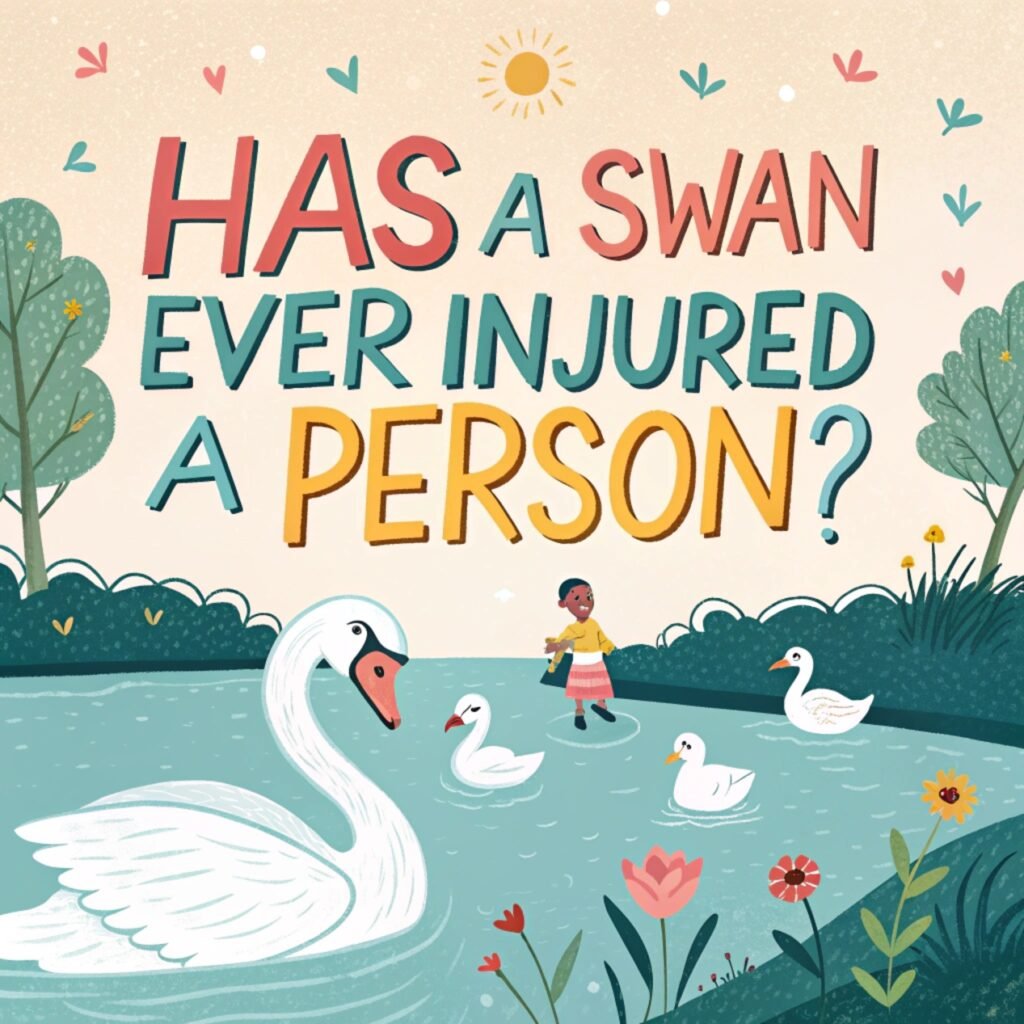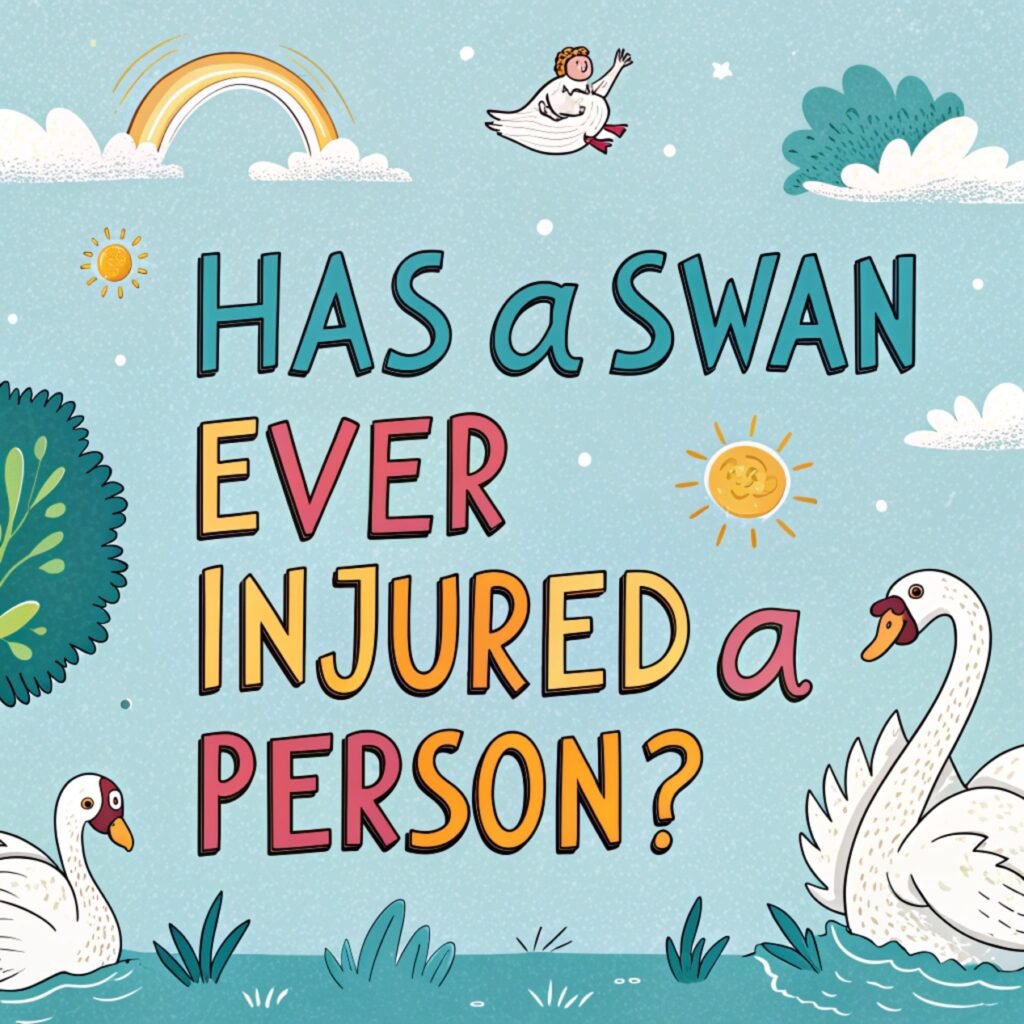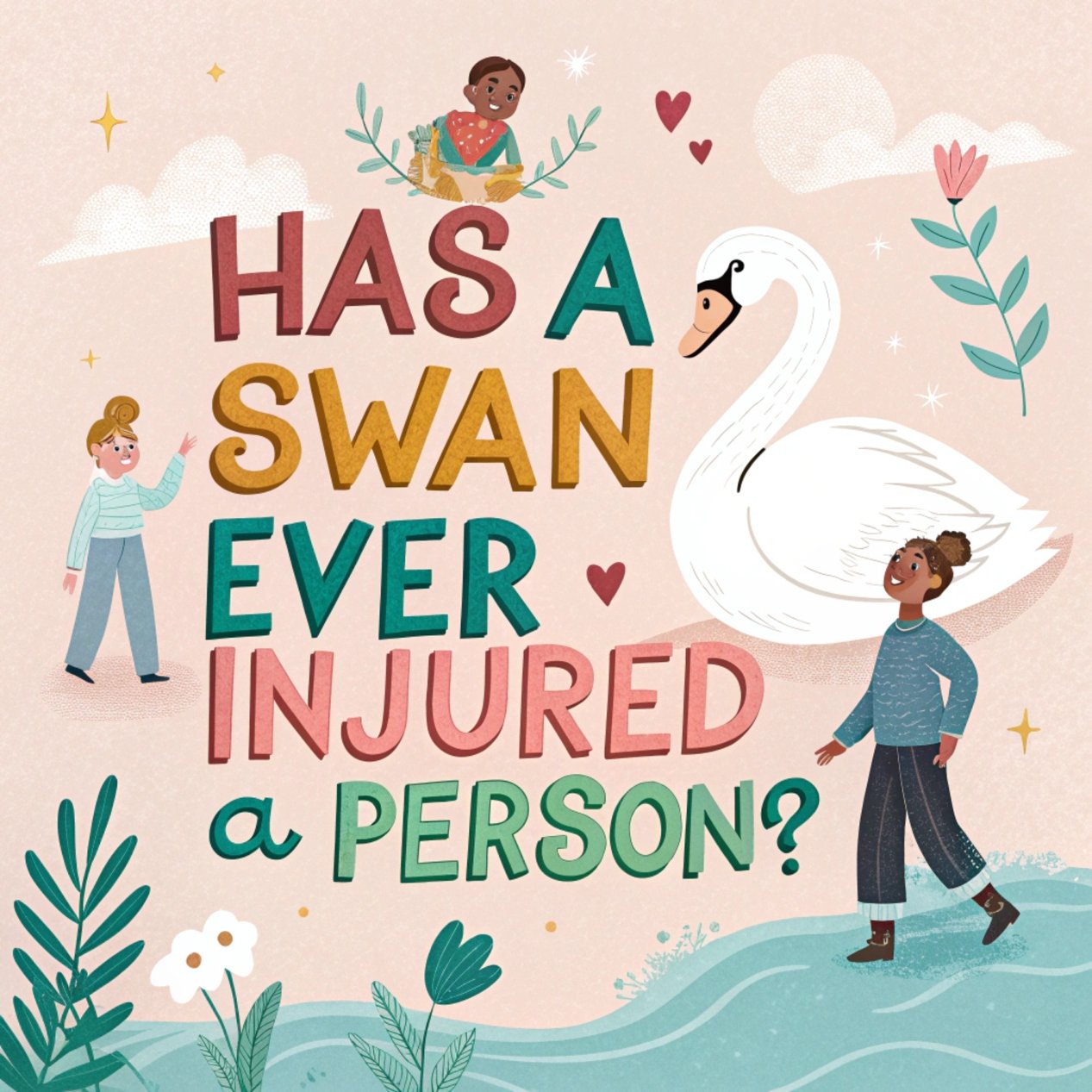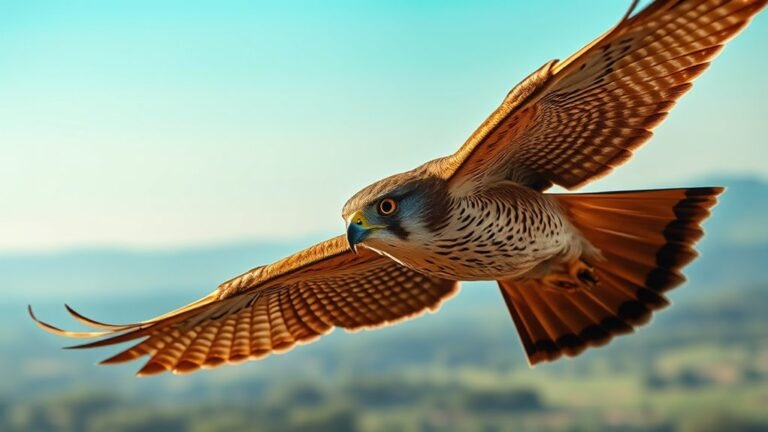Has a Swan Ever Injured a Person? Truth Behind Swan Attacks and Human Safety
Swans, with their graceful necks and pristine white feathers, have long been symbols of beauty and serenity in our lakes and rivers.
However, these majestic birds have also gained a reputation for aggression, sparking curiosity and concern about their potential to harm humans.
This comprehensive exploration delves into the reality of swan attacks, separating fact from fiction and examining documented cases of human-swan confrontations.

Key Takeaways
- Swan attacks are rare but can occur: While incidents of swans injuring humans are infrequent, they can happen, especially during nesting season when swans are most protective.
- Myth debunking is crucial: Common myths, such as swans being able to break human bones with their wings, are unfounded. Understanding the true nature of swan behavior is essential for public safety.
- Territorial behavior is the main cause: Most aggressive swan behavior stems from their instinct to protect their nests, mates, and offspring.
- Environmental factors play a role: Urban swans may exhibit different behaviors compared to those in natural habitats, often due to increased human interaction.
- Climate change impacts swan behavior: Alterations in migration patterns and breeding seasons due to climate change may increase human-swan encounters.
- Prevention is key: Following guidelines for interacting with swans, such as maintaining a safe distance and avoiding feeding, can significantly reduce the risk of negative encounters.
- Legal protections exist: Many countries have laws protecting swans, highlighting the importance of respecting these birds and their habitats.
- Wildlife management is crucial: Effective strategies for managing swan populations and their interactions with humans are essential for coexistence.
- Education is vital: Public awareness about swan behavior and proper interaction techniques is critical for ensuring safety and conservation.
- Respect and caution are necessary: Approaching swans with respect and caution allows for safe observation and appreciation of these beautiful birds in their natural environments.
The Majestic yet Misunderstood Swan: An Introduction to Swan Behavior
Swans are often regarded as symbols of grace and beauty, gliding effortlessly across serene waters.
However, these magnificent birds have also gained a reputation for being aggressive, particularly during nesting season.
Mute swans, the most common species in many parts of the world, are known for their protective nature when it comes to their territory and offspring.
This protective instinct can sometimes lead to confrontations with humans, raising questions about the potential dangers posed by these large waterfowl.
While swans are generally peaceful creatures, their size and strength can make them intimidating when they feel threatened.
Adult swans can weigh up to 13 kg (28 lbs) and have a wingspan of up to 2.4 m (7.9 ft), making them one of the largest flying birds in many regions.
Their impressive size, combined with their protective nature, has led to numerous anecdotes and urban legends about swan attacks on humans.
Documented Cases of Swan Attacks: Separating Fact from Fiction

While stories of swan attacks are often exaggerated, there have been documented cases of swans injuring humans.
One of the most notable incidents occurred in 2012 in Des Plaines, Illinois, just outside Chicago. Anthony Hensley, a 37-year-old father of two, tragically drowned after a swan attacked his kayak, causing it to capsize.
Hensley was employed by a company that used swans to deter geese from a residential complex. While tending to the birds in a kayak, one of the swans charged his boat, knocking him into the water.
Eyewitnesses reported that the swan appeared to actively block Hensley from swimming to shore, contributing to his drowning.
This incident, while extreme, highlights the potential dangers that can arise from swan encounters. However, it’s important to note that such severe outcomes are extremely rare.
Other documented cases include:
- In April 2010, a swan on the River Cam in England made headlines for repeatedly attacking rowers, causing cuts and bruises.
- Rowers and river users on the River Cam reported repeated attacks by an aggressive swan in 2014, leading to calls for its relocation.
- There have been occasional reports of swans injuring dogs, particularly during breeding season.
While these cases demonstrate that swan attacks can occur, it’s crucial to understand that they are infrequent and usually result in minor injuries rather than severe harm.
Understanding Swan Aggression: Reasons Behind Protective Behavior
To comprehend why swans sometimes exhibit aggressive behavior towards humans, it’s essential to understand their natural instincts and the factors that trigger protective responses.
Swans are fiercely territorial, especially during nesting season, which typically occurs from April to June.
Male swans, in particular, are known for their protective nature when it comes to their mate, nest, and cygnets (baby swans).
When they perceive a threat to their family or territory, they may engage in intimidating displays or, in some cases, physical confrontation.
Factors that may trigger aggressive behavior in swans include:
- Proximity to nests: Approaching too close to a swan’s nest can be seen as a threat, prompting defensive actions.
- Presence of cygnets: Adult swans become particularly protective when their young are present.
- Territorial disputes: Swans may become aggressive towards other waterfowl or even humans if they feel their territory is being encroached upon.
- Feeding habits: While not inherently aggressive, swans accustomed to being fed by humans may become forceful when seeking food, potentially leading to intimidating behavior.
Understanding these triggers can help humans avoid situations that might provoke a swan’s defensive instincts, reducing the likelihood of confrontations.
The Anatomy of a Swan Attack: What Really Happens?

When a swan feels threatened and decides to attack, the encounter can be intimidating due to the bird’s size and powerful wings.
However, it’s important to understand the nature of these attacks and their actual potential for harm.
Swans primarily use their wings as their main weapon during confrontations. They may engage in a threat display known as “busking,” where they raise their wings and arch their neck to appear larger and more intimidating.
If the perceived threat persists, they may charge, using their wings to strike at the intruder.
Contrary to popular belief, swans do not typically use their beaks as a primary means of attack. While they may hiss and snap their bills as a warning, their beaks are not particularly strong or sharp compared to other birds.
Debunking Swan Attack Myths: Separating Truth from Exaggeration
Over the years, numerous myths and exaggerations have circulated regarding the dangers posed by swans.
It’s important to address these misconceptions to provide a more accurate understanding of swan behavior and the actual risks involved in swan encounters.
- Myth 1: Swans can break a person’s arm with their wings
This is perhaps the most common myth about swan attacks. In reality, swans do not possess the strength to break human bones with their wings. Their bones are hollow and relatively fragile compared to human bones. - Myth 2: Swans are inherently aggressive towards humans
While swans can display aggressive behavior, they are not inherently hostile towards humans. Most swan attacks occur when the birds feel threatened or are protecting their territory and offspring. - Myth 3: Swans frequently attack and kill humans
Fatal swan attacks are extremely rare. The tragic incident involving Anthony Hensley in 2012 is often cited, but it’s important to note that such cases are highly unusual. - Myth 4: All swans are equally aggressive
Aggression levels can vary among individual swans and different swan species. Mute swans are often considered more territorial than other species, but even among mute swans, behavior can vary.
By dispelling these myths, we can foster a more balanced understanding of swan behavior and promote safer interactions between humans and these magnificent birds.
The Role of Human Behavior in Swan Encounters: Avoiding Confrontations
While swan attacks can occur, human behavior plays a significant role in either provoking or preventing such incidents.
By understanding swan behavior and following some simple guidelines, people can greatly reduce the risk of negative encounters with these birds.
- Respect their space: During nesting season, give swans a wide berth. Avoid approaching nests or areas where cygnets are present.
- Do not feed swans: While it may seem harmless, feeding swans can alter their natural behavior and make them more likely to approach humans aggressively in search of food.
- Keep dogs on leashes: In areas where swans are present, keep dogs under control to prevent them from disturbing nests or chasing swans.
- Avoid sudden movements: If you find yourself close to a swan, move slowly and calmly. Sudden movements may be perceived as threatening.
- Do not attempt to touch or pet swans: Despite their beauty, swans are wild animals and should not be handled or approached closely.
- Be aware of your surroundings: When engaging in water activities like kayaking or rowing, be mindful of swan territories and avoid getting too close.
By following these guidelines, people can enjoy observing swans in their natural habitat while minimizing the risk of confrontations.
The Legal and Conservation Status of Swans: Understanding Protection Measures
Swans, particularly mute swans, enjoy various levels of legal protection in many countries. Understanding these protections is crucial for both conservation efforts and managing human-swan interactions.
In the United Kingdom, all wild swans are protected under the Wildlife and Countryside Act 1981. It is illegal to kill, injure, or take swans, and interfering with their nests or eggs is also prohibited.
In the United States, the legal status of swans varies by species and location. Native trumpeter and tundra swans are protected under the Migratory Bird Treaty Act.
However, mute swans, which are non-native to North America, have a more complex legal status and are sometimes subject to population control measures in certain areas.
Swan Behavior in Different Environments: Urban vs. Natural Habitats
The behavior of swans can vary significantly depending on their environment. Swans in urban or semi-urban settings often have more frequent interactions with humans, which can influence their behavior and potential for confrontations.
In natural habitats, swans typically maintain a greater distance from humans and are less likely to engage in aggressive behavior unless their nesting areas are approached.
These swans are usually more wary of human presence and will often retreat when people come near.
Urban swans, on the other hand, may become more accustomed to human presence. This familiarity can sometimes lead to bolder behavior, including approaching humans for food or defending territories that overlap with human-used areas.
The incident on the River Cam, where a swan repeatedly attacked rowers, is an example of how urban swans can become territorial in areas frequented by humans.
The Impact of Climate Change on Swan Behavior and Human Interactions
Climate change is having a profound effect on wildlife across the globe, and swans are no exception.
Changes in temperature patterns, precipitation, and habitat availability can influence swan behavior, potentially affecting their interactions with humans.
- Altered migration patterns: Some swan species are altering their migration routes or timing in response to changing climate conditions.
- This could lead to swans appearing in new areas or at different times of the year, potentially increasing human-swan encounters in unexpected locations.
- Changes in breeding seasons: Warmer temperatures may lead to earlier breeding seasons for swans. This could result in nesting and territorial behavior occurring at times when human recreational activities are increasing, potentially leading to more conflicts.
- Habitat loss: As climate change affects wetland habitats, swans may be forced into smaller or more urbanized areas, increasing the likelihood of human-swan interactions.
- Food availability: Changes in aquatic plant growth due to altered climate patterns could affect swan feeding habits, potentially leading them to seek food in areas more frequented by humans.
As these changes occur, it becomes increasingly important to monitor swan populations and behavior, and to educate the public about potential shifts in swan activity and how to interact safely with these birds in changing environments.
Swan Attack Prevention and Safety Measures: Guidelines for the Public
While swan attacks are rare, it’s important for the public to be aware of how to prevent confrontations and what to do if an aggressive encounter occurs. Here are some key guidelines:
- Observe from a distance: Enjoy watching swans from afar, using binoculars if you want a closer view.
- Recognize warning signs: If a swan raises its wings or hisses, it’s feeling threatened. Slowly back away and give it space.
- Protect children and pets: Keep children close and dogs on leashes in areas where swans are present.
- Avoid feeding: Do not offer food to swans, as this can encourage aggressive behavior.
- Be cautious near water: When boating or swimming, be aware of swan territories and avoid getting too close to nesting areas.
- If attacked: In the unlikely event of an attack, protect your face and eyes. Move away slowly and calmly. Do not turn your back on the swan.
- Report aggressive behavior: If you encounter a particularly aggressive swan, report it to local wildlife authorities who can assess the situation and take appropriate action.
By following these guidelines, people can significantly reduce the risk of negative encounters with swans while still enjoying the presence of these beautiful birds in their natural habitats.
The Role of Wildlife Management in Mitigating Swan-Human Conflicts
Wildlife management plays a crucial role in minimizing conflicts between swans and humans while ensuring the well-being of swan populations. Various strategies are employed by wildlife authorities to manage these interactions effectively:
- Habitat management: Creating and maintaining suitable habitats for swans away from high-traffic human areas can reduce the likelihood of confrontations.
- Public education: Informing the public about swan behavior, nesting habits, and appropriate interaction guidelines is crucial for preventing conflicts.
- Signage and barriers: In areas where swans frequently nest, wildlife managers may install signs warning of swan presence and potential aggressive behavior. Physical barriers may also be used to discourage people from approaching nesting sites.
- Relocation programs: In some cases, particularly aggressive swans may be relocated to more suitable habitats where they are less likely to come into conflict with humans.
- Population management: In areas where non-native swan populations (such as mute swans in North America) have become problematic, controlled population management techniques may be employed.
- Monitoring and research: Ongoing studies of swan behavior and population dynamics help inform management strategies and predict potential areas of conflict.
By implementing these strategies, wildlife managers aim to create a balance that allows both swans and humans to coexist safely in shared environments.
Coexisting Safely with Swans in Our Shared Environments
While swan attacks on humans do occur, they are relatively rare and usually result in minor injuries.
The tragic case of Anthony Hensley in 2012 stands out as an extreme and unusual incident. Most swan aggression stems from their natural instinct to protect their territory and offspring, particularly during nesting season.
Understanding swan behavior, respecting their space, and following simple guidelines can significantly reduce the risk of negative encounters.
It’s important to dispel myths about swan attacks while still recognizing that these large birds can be intimidating and potentially dangerous if provoked or cornered.
Wildlife management strategies, public education, and conservation efforts all play crucial roles in promoting safe coexistence between humans and swans.
As we face environmental changes that may affect swan behavior and habitats, ongoing research and adaptive management approaches will be essential.
Ultimately, swans remain an important and beautiful part of our natural world. By approaching them with respect, caution, and understanding, we can continue to enjoy their presence in our shared environments while ensuring the safety of both humans and these majestic birds.
Frequently Asked Questions
Are swan attacks common?
Swan attacks on humans are relatively rare. While swans can display aggressive behavior, especially during nesting season, most encounters between swans and humans are peaceful. Attacks usually occur when swans feel their territory or offspring are threatened.
Can a swan really break a person’s arm?
This is a common myth, but it’s not true. Swans do not possess the strength to break human bones with their wings. Their bones are hollow and relatively fragile compared to human bones. While a swan’s wing can cause bruising or minor injuries, it cannot break an arm.
Are some swan species more aggressive than others?
Mute swans are often considered more territorial and potentially aggressive than other swan species. However, individual temperament can vary greatly among swans, even within the same species.
Is it safe to feed swans?
It’s generally not recommended to feed swans. Feeding can alter their natural behavior and make them more likely to approach humans, potentially leading to aggressive encounters. Additionally, human food is often not suitable for their diet.
What time of year are swans most likely to be aggressive?
Swans are typically most territorial and potentially aggressive during their nesting season, which usually occurs from April to June. During this time, they are protective of their nests, mates, and cygnets.
Can swans be dangerous to small children or pets?
While rare, swans can potentially pose a risk to small children or pets, especially dogs. It’s important to keep children at a safe distance from swans and keep dogs on leashes in areas where swans are present.

Hello, I’m Emily Price, the founder of Birds Affection. As a passionate bird enthusiast and spiritual seeker, I’ve always been fascinated by the symbolic meanings and mystical connections between birds and our lives. On this website, I share my knowledge and insights on the spiritual significance of various bird species, exploring their roles as messengers, guides, and teachers. Through my writing, I aim to inspire and educate others on the profound wisdom and beauty that birds bring to our world. Join me on this journey as we delve into the enchanting realm of bird symbolism and discover the hidden meanings behind these magnificent creatures.







